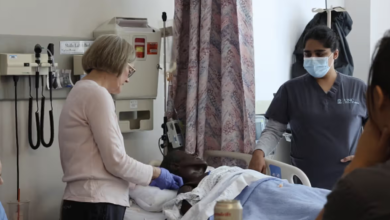Nurses Push Back on GPS-Enabled Panic Alarm Policy in Fairview Contract Negotiations

Image source: Star Tribune
As violence against healthcare workers continues to surge, hospitals across the country are searching for solutions that protect staff without infringing on their rights. In Minnesota, this debate has become a central—and contentious—issue in ongoing contract negotiations between Fairview Health Services and the Minnesota Nurses Association (MNA). At the heart of the dispute: GPS-enabled panic buttons that promise quick emergency response but raise serious concerns about privacy and workplace surveillance.
Nurses at Fairview hospitals are currently negotiating new three-year contracts, with issues like pay, staffing, and benefits on the table. However, one of the most divisive topics is the proposed rollout of wearable panic alarms that include GPS tracking. While both the union and hospital management agree on the need for enhanced safety measures, the MNA is demanding strict limits on how location data from these devices can be used.
In a recent interview with the Star Tribune during a protest, nurse Rachel Anderson said, “They want to maybe install them by the end of 2027 and reserve the right to use them to track and discipline us.”
The union wants guarantees that panic button data will only be used in emergencies, not for tracking nurses’ daily movements or for disciplinary purposes—unless there is already evidence of serious misconduct, such as drug diversion.
While Fairview management insists it does not plan to discipline nurses based solely on location data, it wants to retain the right to use GPS information for investigations, such as drug diversion—similar to how security footage and badge swipes are used. The union, citing a lack of trust and clear policy, is pushing back.
This debate isn’t isolated. In New York, a new workplace safety law requires panic alarms for retail workers but prohibits tracking unless the alarm is activated. Nurses’ advocates warn that without clear limits, safety tools can quickly become surveillance tools, eroding trust and morale.
The push for panic alarms comes amid a sharp rise in hospital violence. In Minnesota, disabling injuries among hospital workers caused by workplace violence have tripled over the past decade. High-profile incidents—like an armed visitor at M Health Fairview Southdale Hospital this spring—underscore the urgent need for effective safety measures.
Across the U.S., nurses are increasingly exposed to aggression from patients, visitors, and even family members. Nurse.org has reported on this hospital violence crisis, highlighting the need for both immediate protection and long-term policy change.
The panic button issue is just one of several stalling contract negotiations for more than 15,000 nurses across Minnesota. Talks are ongoing with other major hospital systems, including Allina, Children’s, North Memorial, Essentia, and Aspirus St. Luke’s. After a one-day picket in early June, the MNA announced a possible strike vote if negotiations remain deadlocked.
Nurses: you deserve to feel safe at work, plain and simple. And you deserve to do your job without feeling like you’re being constantly watched. As new tech rolls out, we’ve gotta make sure the rules keep up, protecting both our physical safety and our dignity on the job.
So, what does all this mean for you? It means staying in the loop is super important. These contract talks aren’t just about Minnesota; they reflect a bigger conversation happening everywhere about how we balance safety with our privacy and professional trust.
🤔 Nurses, what do you think about panic buttons at work? Share your thoughts in the discussion forum below.







